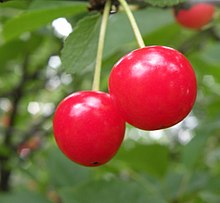Photosynthetic bacteria that have lived on Earth for 2.7 billion years are the source of a new and valuable biological regulatory tool being developed by Rice University bioengineers.
Synechocystis bacteria produce a protein pathway that senses the presence of UV-violet light and activates a motor protein that moves the single-cell organism into safer surroundings.
The pathway responds quickly to UV-violet light, a narrow band in the spectrum that includes long ultraviolet and short violet wavelengths, and is blind to all others. That makes it a perfect addition to the growing optogenetic suite of reversible photoreceptors being developed by researchers in the lab of Rice synthetic biologist Jeffrey Tabor. Tabor and graduate student Prabha Ramakrishnan co-authored a new paper about this research in the American Chemical Society journal ACS Synthetic Biology.
"The human eye can see colors that go all the way from violet to red," Ramakrishnan said. "It turns out that marine algae -- especially the bacteria these sensors come from -- have evolved to see these and other colors as well."
Optogenetics is a fairly new discipline in which light-activated, genetically encoded photoreceptors are used to sense or control molecular biological processes like the expression of desired proteins. Because light is easy to direct and control, photoreceptors are simpler to use than tools that respond to chemical prompts.
The Rice researchers turned the photosynthetic bacterial proteins into photoreversible, transcriptional regulators and installed them in Escherichia coli bacterial for lab testing. They reported exploiting them to program gene-expression signals "with high predictability."
The protein pathway known as UirS-UirR is the only optogenetic tool that responds exclusively to UV-violet light and gives biologists the ability to program circuits with light-activated proteins that won't interfere with each other, Tabor said. "Biological systems are regulated by numerous interacting genes, and multiple optogenetic tools that don't optically cross-react are needed to study these networks," he said.
The photoreversible pathway can be turned on by exposure to ultraviolet light and turned off by exposure to green light, or vice versa, depending on how the circuit is designed. Tabor expects they will be useful tools for scientists who design metabolic pathways for drug manufacture and biological sensors.
The new sensors offer speed and versatility in circuit design. "We found that light sensors developed by others take more than two hours to switch on or off, and respond to a broad range of wavelengths," Tabor said. "These aspects are not ideal for studying and controlling bacterial processes."
By contrast, the UV-violet sensor can be switched on or off in 10 minutes, Ramakrishnan said. "That's good because producing proteins or controlling a biological process can be expensive for cells. Producing something that's neither necessary for the cell nor to the product you're trying to synthesize is wasteful."
"Our photoreversible tools allow gene expression to be tuned to different levels more precisely, like a good dimmer switch," Tabor added. "They allow gene expression to be changed to a new level more quickly than a nonphotoreversible tool. All of these features are beneficial for using the tool to study native bacterial gene networks or for industrial applications."
Because the UV-violet sensor responds to such a narrow wavelength of light -- from 380 to 420 nanometers -- there's no crosstalk with the red and green photoreversible tools already developed by the lab. "When these are put together in a single system, the fact that they don't interact with each other at all and turn on and off rapidly is going to be very useful," Ramakrishnan said.





